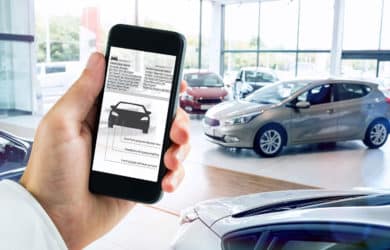Of course, special boundary conditions apply in the automotive sector. These make, for example, the application of bottleneck management not possible “out of the box”. Due to years of optimisation pressure and massively distributed development, finding a bottleneck is practically impossible. Therefore, we use the concept of the virtual bottleneck – instead of a resource, a project phase is used as a bottleneck. This makes it possible to keep the bottleneck stable and enormously simplifies resource management, since only one bottleneck needs to be considered initially. Strategic decisions can thus be made with confidence in the shortest possible time.
With this combination, Mazda was able to reduce the development time of its vehicles by 50% and at the same time increase the project throughput by 50% (more information here).
Especially in the area of digitalisation and the resulting increasing focus on software, agile methods are also increasingly desired and used. However, these methods are confronted with particularly high quality requirements in the automotive sector and the associated regulations, norms, standards and tests. Furthermore, in the automotive sector, software is never self-sufficient, but always connected to electronics and hardware. This in turn has completely different cycles and dependencies. Simply transferring agile methods to the automotive environment is therefore doomed to failure. At this point, we use other concepts from bottleneck management, such as critical chain and buffer management. This enables a seamless dovetailing of agile and classic and at the same time provides clear priorities for everyone.
With this approach, several automotive suppliers were able to increase the throughput of agile and classic teams by 60%-80% and the reliability of deliveries to almost 100% in just a few weeks.
These approaches are fully compatible with many automotive standards and regulations, such as A-Spice® MAN.3 and others. So the desire for agility and reliability can be met at the same time!
In addition, companies in the automotive sector operate with permanently high resource utilisation for reasons of efficiency. Changes according to the classic model usually require many resources and a lot of time. Changes based on self-organisation are the solution here. Typically, only two parameters would have to be changed. As a result, behavioural patterns are activated in the employees (and do not have to be learned) that lead to optimisation. The effects mentioned above were usually achieved with 2-3 workshops and in a few weeks.
The list of companies using these new concepts is growing daily. First and foremost companies like Amazon, Skype, Mazda, BOSCH, Festo, Endress+Hauser, Otto-Fuchs, to name but a few.






